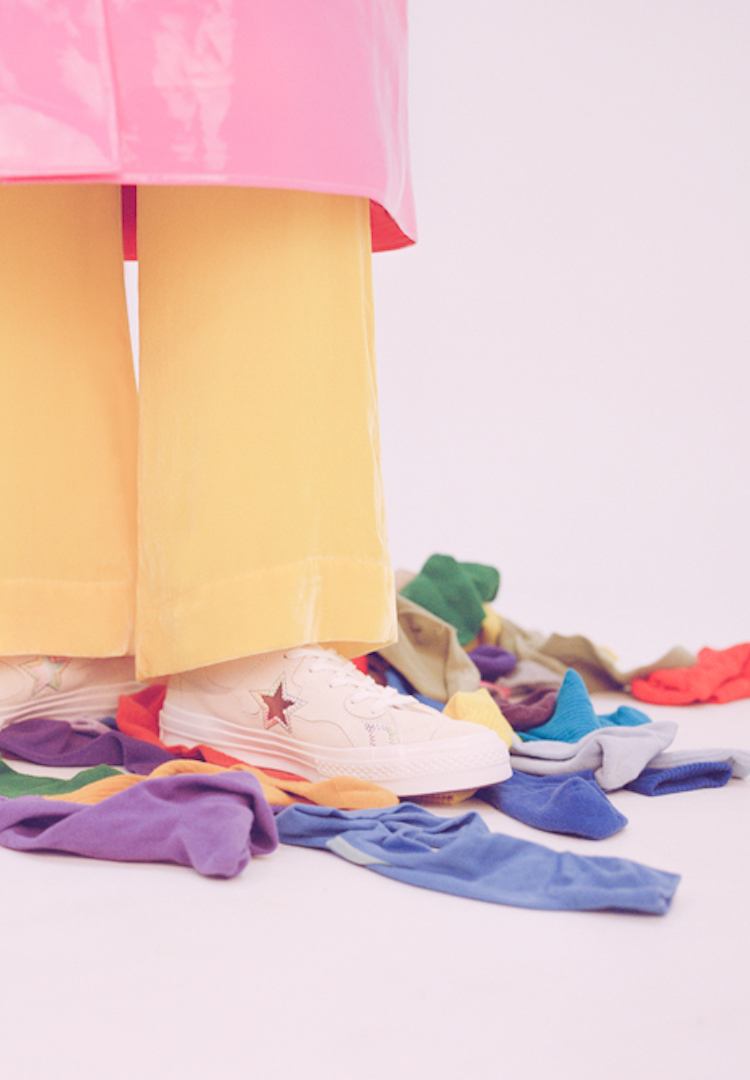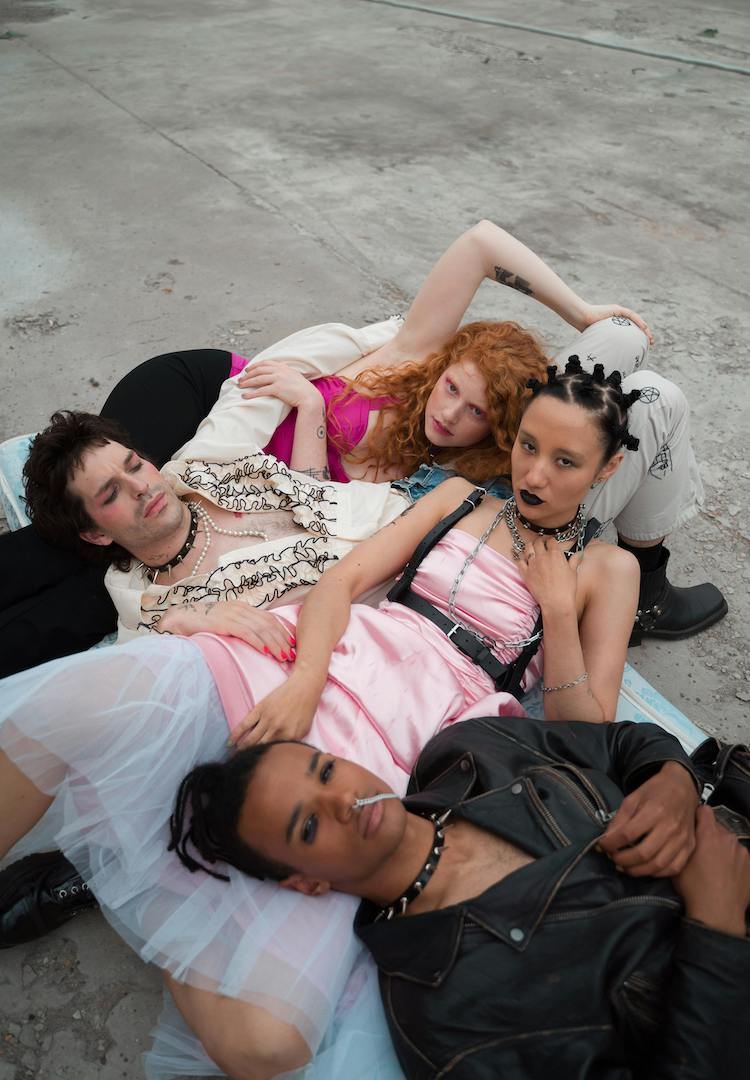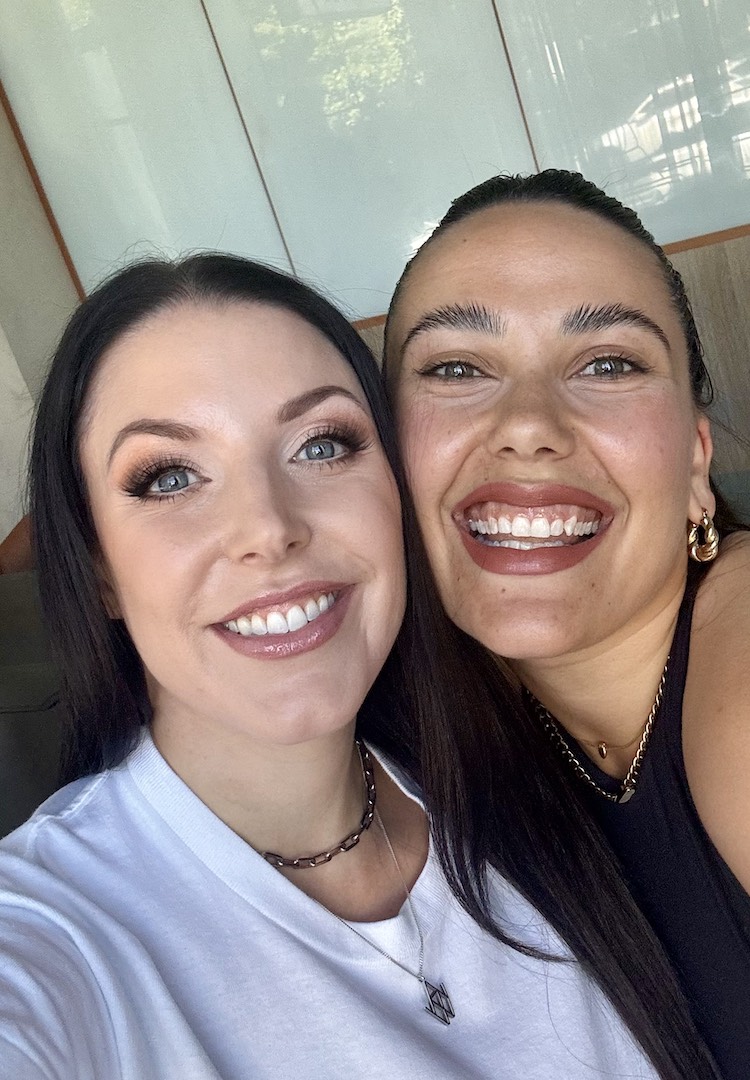I have to keep coming out, here’s why
IN PARTNERSHIP WITH CONVERSE
PHOTOGRAPHY BY ISABELLA CONNELLEY
STYLING BY CARLOS MANGUBAT
MODEL WEARS ERIK YVON COAT, SLEEPING WITH JACQUES PANTS, CONVERSE PRIDE SHOES
SOCK FROM CHUSETTE
WORDS BY RIMU BHOOI
“Being polite or gracious doesn’t help; I’ve found that putting people at ease in this situation doesn’t make it any more likely that they will respect me.”
Content warning: This article discusses homophobia, transphobia, ableism, self-injury and suicide.
This Pride Month, in partnership with Converse, Fashion Journal is welcoming a queer guest editor from the Converse All Star community to guide our storytelling in support of queer voices. Rimu Bhooi is a queer, non-binary, disabled Indian of Punjabi Sikh descent, working as a writer, board member, creative, and an activist for human rights and the most marginalised communities. This article was written and edited by Rimu in consultation with the Fashion Journal team.
I built up my coming out in my head for weeks before I finally did it. At lunchtime, a treasure hunt led to a tray of cupcakes with ‘I’m not straight’ iced on them. Personalised letters to my closest friends? What would work best?
In the end, sickened with anxiety, I managed to cough up the words between sobs to my best friend. It was quite the disaster. She didn’t hit the mark with a supportive response, and I shrunk back into myself again. A couple of years later, I made new friends who didn’t identify with the gender binary. I had never considered my gender past what the doctor assigned at birth.
Interested to hear how others navigate the world? Head to our Life section.
It has been a great gift to finally feel safe enough to explore my gender and sexuality. But, it has been an even greater gift to have people around me who get it while I do. On the other hand, I have to keep coming out to people who aren’t my found family.
I regularly encounter paramedics, emergency department staff, doctors, nurses, and specialists. Unfortunately, I hardly ever see the same people, so I have to keep coming out every time I need healthcare. You may wonder how my gender identity and sexuality would be relevant to these folks. The vast majority of healthcare I access is gynaecology, often referred to as ‘women’s health’.
I am not a woman. I have long bushy hair and often wear dresses and skirts so that my mobility isn’t limited. My gender expression is my best guess as to why my sexuality is assumed. Do you see my dilemma? I’m also queer* and in a long-term relationship with a woman. They ask when my boyfriend is coming to pick me up, how my sex life is affected by my chronic pain, and whether he is ‘understanding’ of this.
Every time I go to the emergency department, I must do a pregnancy test. I have queer sex. Do you see my dilemma? I have moderate endometriosis, chronic pain, adenomyosis, vaginismus, chronic fatigue, functional seizures, clinical depression, generalised anxiety disorder, and post-traumatic stress disorder.
The chronic pelvic pain is often acute and unmanageable at home when I have a flare-up. However, this happens so regularly that getting pain relief from the emergency department is part of the pain management plan my GP and gynaecologist put together. I even have a favourite bed in the gynaecology ward.
Then there’s the pandemic. I know firsthand that emergency rooms are at capacity, staff are off sick, and the hospitals are overwhelmed. Nurses and doctors have very little time and energy for me. I have only recently begun to correct people on my pronouns, gender marker, and sexuality. For years, I believed it was easier to pass under the radar.
When I shook so hard from pain that I couldn’t walk or string a sentence together, it seemed more straightforward to focus on accessing pain relief. Convincing people that endometriosis is an actual condition that deserves investigation and support took up most of my time in the hospital.
But, as the years went on and no one bothered to ask me my pronouns nor ask about my partner (not boyfriend), I grew angrier and angrier. I’m sure you know that our society loves to put people in boxes. So the burden of correction lies on people like me, who hate those boxes and don’t fit neatly into one.
Coming out to strangers isn’t fun; I never know if they are bigoted ahead of time. But I do it because the harm being misgendered and having my identity assumed causes me is getting severe. People have denied me pain relief so often that I have post-traumatic stress. Nurses and doctors have called me a drug seeker and told me that it couldn’t be that bad.
I turned up month after month screaming in pain, unable to move my body or look after myself, crying out for relief from this pain because I couldn’t live like this anymore. I have sobbed night after night, convinced that the pain is my fault.
They let me live like this for years. This consistent disrespect convinced me there was no point in adding something like my gender to the mix of things people wouldn’t believe. My mental health plummeted. I would refuse to go to the hospital because I was so traumatised by it all. I would scream out for the pain to end; “I can’t live like this, ‘I can’t do this anymore”.
I became really depressed. Thoughts of doing something, anything, to stop the pain would pop into my head, and I couldn’t make them go away. Counselling could only help so much when being denied pain relief was the biggest trigger for a depressive episode. But slowly, I’ve started to stand up for myself.
First, I’ll correct the intake nurse when they assume my pronouns are she/her. Then, when they wrap a bracelet around my wrist, I check to see if they’ve assumed my gender marker is F (for female). I make sure to look them in the eye when I request they change it. Finally, when they assume I have a boyfriend, I’ll speak over them and say “Girlfriend. I have a girlfriend”.
Being polite or gracious doesn’t help; I’ve found that putting people at ease in this situation doesn’t make it any more likely that they will respect me. Deliberately making people uncomfortable has taken me some time to become accustomed to.
This technique will not work for all those in rainbow* communities. It takes bravery to come out in such an environment, and it has to be safe. Many of us are at risk if we’re open about who we are, which means we may not access healthcare when needed. Forgoing healthcare because we are or have been disrespected is valid.
My own experiences clarify just how closely linked this disrespect is to mental health crises. For example, Aotearoa has one of the highest youth suicide rates in the OECD, with the rates for rainbow people being even higher.
Combined with being Indigenous or from an immigrant or refugee background, we know that the quality of life and health outcomes worsen. Queer people deserve healthcare – it’s a human right, and we shouldn’t have to fight tooth and nail to get it. So, do you see our dilemma?
*This writer uses rainbow and queer interchangeably as umbrella terms that embrace any person whose sexual orientation, gender identity or expression, or sex characteristics differs from the majority binary (female/male) norms. This includes lesbian, gay, bisexual, trans, takatāpui, intersex, LGBTQIA+ and other culturally specific terms such as sistergirl, brotherboy and fa’afafine. They acknowledge that these terms might not work for everyone.
Rimu Bhooi is a queer, non-binary, disabled Indian of Punjabi Sikh descent. They live on the whenua of Ngāti Toa, Te Āti Awa, and Taranaki Whānui ki te Upoko o te Ika a Maui. Rimu lives with endometriosis and the many comorbidities that come with the condition. Working as a writer, board member and creative, they are an activist for human rights and the most marginalised communities. This Pride month, they are the Guest Editor of Fashion Journal, made possible by Converse.
FJ readers can explore dozens of stories from the Converse queer community online at the Converse.Gallery and shop the brand’s Pride capsule collection here.










